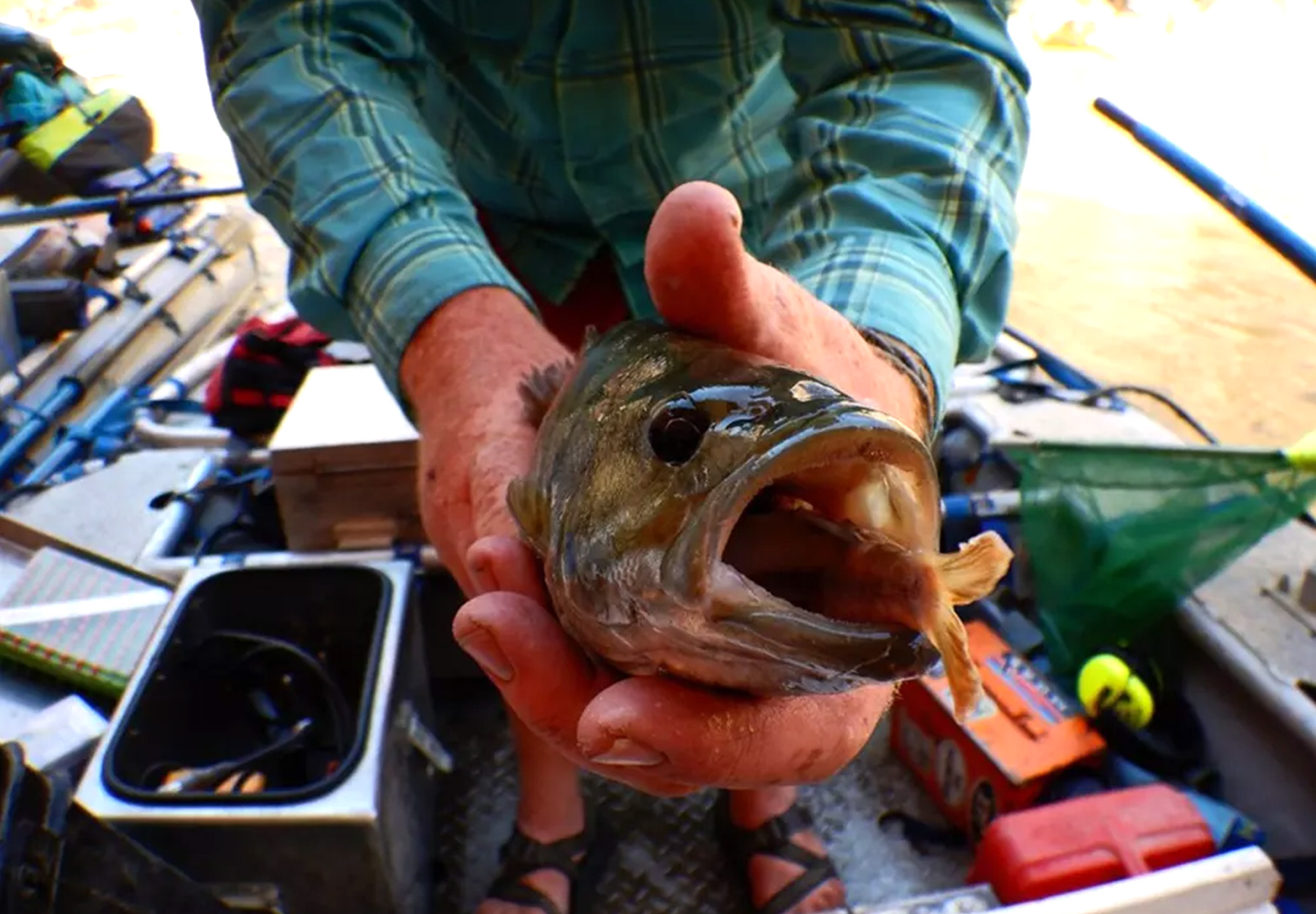A few Western lawmakers in the Senate and House of Representatives are leaning on the Trump administration to investigate, and possibly roll back, a plan to manage invasive species in the Colorado River. They worry that recent efforts to control the spread of smallmouth bass in the Grand Canyon by increasing pulse flows from Glen Canyon Dam are taking too big a bite out of hydropower production and making electricity more expensive.
To that end, Sen. Mike Lee (R-Utah) and Rep. Harriet Hageman (R-Wyo.) introduced companion bills in both chambers that would review the Bureau of Reclamation’s 2024 decision to use Glen Canyon Dam to mitigate the spread of smallies. The two bills would also address any impacts the decision has had on the Upper Colorado Basin Fund, which gets most of its funding from hydroelectric power revenues.
“People in Utah and across the West depend on the Glen Canyon Dam for stable, low-cost electricity,” Lee said in a statement introducing the bill last week. “Last year, the Biden administration recklessly limited hydropower generation at this site and increased energy costs for millions of people.”
It’s difficult to find exact figures for the increased costs that Lee refers to. But according to the Colorado Sun, Glen Canyon Dam did produce less electricity in 2024 — around 17 percent less than the previous 23-year average. The ongoing megadrought was also a major factor in that decrease.
Lee noted in his statement that any changes to the current smallmouth mitigation plan would balance hydropower interests with conservation efforts. Local river advocates are doubtful, however, that Congressional attempts to realign the plan would prioritize the health of the Colorado and its fish over a healthy revenue stream.
Read Next: Breach or Die: It’s Time to Free the Lower Snake River and Save Idaho’s Wild Salmon
“I have a hard time believing this bill actually aims to protect the river’s ecosystems,” Glen Canyon Institute executive director Eric Balken told Politico Wednesday. Balken added that the legislation would make it difficult, if not impossible, to address the smallmouth invasion in the future by increasing flows from Glen Canyon Dam — a strategy that, so far, seems to be working in favor of native fish.
Keeping Smallies Out of the Grand Canyon
The plan that the Bureau of Reclamation adopted last July is pretty straightforward from a fisheries management perspective. But since it revolves around the most important and disputed river system in the West, nothing is quite as simple as it seems.
For background, Glen Canyon Dam impounds the Colorado River to form Lake Powell, which stores water and functions as a “savings bank” during drought years. Lees Ferry, the put-in for boaters on the Grand Canyon, lies just downstream of the dam, which releases cold water from the bottom of Lake Powell and provides hydroelectric power in the process.
In recent decades, however, as protracted droughts and battles over water rights have sapped the mighty river, the water level of Lake Powell has dropped dangerously close to dead pool — the point at which the lake would be too low to send any water downstream. To put it lightly, this would seriously disrupt a system that provides water for more than 40 million Americans.
Dropping water levels have also allowed some of the lake’s smallmouth bass to slip through the dam’s turbines and into the Grand Canyon below. Colorado River managers started seeing this around 2021. And as much as we love smallmouth bass as a sportfish, they are one of the most dangerous species in the country from a conservation perspective.
In the case of the Grand Canyon, bronzebacks are eating into populations of native fish, including razorback suckers and the federally-protected humpback chub. Smallmouths are also impacting rainbow and brown trout, two other non-natives that are managed closely in the canyon.
After trying other ideas, like poisoning certain stretches, the Bureau of Rec. came up with a different strategy that was approved by the Biden administration and enacted in 2024. The plan involved increasing flows from Glen Canyon Dam during the smallmouth spawning season. These pulses of cold water would theoretically disrupt their ability to spawn.
Read Next: $100,000 Fine for Releasing a Smallmouth Bass in Canadian River: Do Mandatory Catch-and-Kill Orders Actually Help Population Control?
And the plan worked. Quite well, actually, according to the National Park Service. After implementation in 2024, NPS fisheries managers surveying the Grand Canyon were unable to find any smallmouth bass spawning in the 76-mile stretch between Glen Canyon Dam and the confluence with the Little Colorado. They’d also taken additional actions to keep smallies out of the canyon, including electroshocking, and the placement of block nets and fish traps. But to have any lasting effect on bass populations, those efforts will have to continue.
“Ongoing actions to monitor and control this species will continue to be needed,” the NPS explained in a detailed report. “If reproduction can be suppressed by keeping river temperatures below critical thresholds, the population should decline to a point where much less removal effort is needed to keep the population from becoming established.”
Read the full article here




